|
Books Should Be Free Loyal Books Free Public Domain Audiobooks & eBook Downloads |
|
|
Books Should Be Free Loyal Books Free Public Domain Audiobooks & eBook Downloads |
|
Non-fiction |
|---|
|
Book type:
Sort by:
View by:
|
By: Lafcadio Hearn (1850-1904) | |
|---|---|
 Japan: An Attempt at Interpretation
Japan: An Attempt at Interpretation
Greece-born Lafcadio Hearn (1850 - 1904) spent decades of his life in Japan, even marrying a Japanese woman, thus becoming a Japanese citizen by the name of Koizumi Yakumo (小泉 八雲). He wrote many books on Japan, especially about its folklore. In this posthumously published book, he takes a closer look at Japan's religious history: How it developed from ancient beliefs into Shintoism, resisted suppression attempts by both Buddhism and Christianity and how – despite efforts to westernise Japan during the era known as Meiji Restoration – it remained the basis for Japanese society... | |
By: Laozi | |
|---|---|
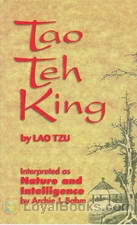 The Tao Teh King, or the Tao and its Characteristics
The Tao Teh King, or the Tao and its Characteristics
Written in classical Chinese some time during the sixth century BC, The Tao Teh King or The Tao and its Characteristics is a classical Chinese text that is one of the important keystones in understanding the thought systems of Asia. Though no clear records exist, it is traditionally thought to have been the work of the sage Lao Tzu, the founder of classical Taoism. He is reputed to have been a contemporary of Confucius, though this is also shrouded in mystery. However, many succeeding emperors and dynasties have claimed that he lived in their eras... | |
By: Laura E. Howe Richards (1850-1943) | |
|---|---|
 Abigail Adams and Her Times
Abigail Adams and Her Times
This is a young person's biography of Abigail Adams that will appeal to readers of all ages. In the author's own words, "I am not writing a history; far from it. I am merely throwing on the screen, in the fashion of today, a few scenes to make a background for my little pen-picture-play. " - Summary by Ciufi Galeazzi | |
By: Laura Lee Hope | |
|---|---|
 Bobbsey Twins on the Deep Blue Sea
Bobbsey Twins on the Deep Blue Sea
This is the 11th in the original series of books about the Bobbseys -- two sets of twins in one family, solving mysteries and having adventures. Bert and Nan are 12, Flossie and Freddie are six. There is a father who works, a mother who stays home, a cook, a handyman, and an assortment of animals. - Summary by Nan Dodge | |
By: Lawrence Beesley (1877-1967) | |
|---|---|
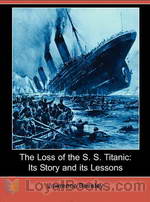 The Loss of the S. S. Titanic
The Loss of the S. S. Titanic
This is a 1st hand account written by a survivor of the Titanic about that fateful night and the events leading up to it as well as the events that followed its sinking. | |
By: Leander Stillwell (1843-1934) | |
|---|---|
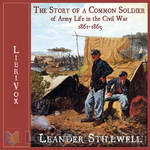 The Story of a Common Soldier of Army Life in the Civil War, 1861-1865
The Story of a Common Soldier of Army Life in the Civil War, 1861-1865
Leander Stillwell was an 18-year-old Illinois farm boy, living with his family in a log cabin, when the U.S. Civil War broke out. Stillwell felt a duty “to help save the Nation;” but, as with many other young men, his Patriotism was tinged with bravura: “the idea of staying at home and turning over senseless clods on the farm with the cannon thundering so close at hand . . . was simply intolerable.” Stillwell volunteered for the 61st Illinois Infantry in January 1861. His youthful enthusiasm for the soldier’s life was soon tempered at Shiloh, where he first “saw a gun fired in anger,” and “saw a man die a violent death... | |
By: Lebbeus Mitchell (1879-1963) | |
|---|---|
 Bobby in Search of a Birthday (version 2)
Bobby in Search of a Birthday (version 2)
Bobby is a little orphan boy of about 5 who discovers he has somehow lost his 'birfhday' and decides to go looking for it. This epic quest takes him into strange places and meetings with people who are sometimes scoffing, but mostly kind and helpful to the small tot. Does he find his birfday? Well I can't tell you that, you will just have to listen. If you like warm, sweet stories with a great ending, this is for you! A delightful tale full of whimsy and fun. - Summary by phil chenevert | |
By: Leo Tolstoy (1828-1910) | |
|---|---|
 The Kingdom of God is within you
The Kingdom of God is within you
The title of the book comes from Luke 17:21. It is a non-fiction work of the famous Russian author Leo Tolstoy. He wrote it after many years of reflexion on Christianity and Jesus. Many subjects are present such as wars, non-violence, misunderstanding by believers of the faith, etc. | |
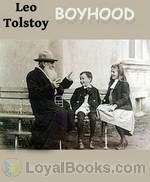 Boyhood
Boyhood
Boyhood is the second in Tolstoy's trilogy of three autobiographical novels, including Childhood and Youth, published in a literary journal during the 1850s. (Introduction by Bill Boerst) | |
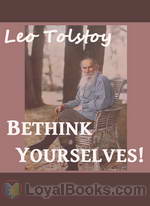 Bethink Yourselves!
Bethink Yourselves!
As Russia goes to war against Japan, Tolstoy urges those at all levels of society, from the Tsar down to the common soldier, to consider their actions in the light of Christ's teaching. "However strange this may appear, the most effective and certain deliverance of men from all the calamities which they inflict upon themselves and from the most dreadful of all—war—is attainable, not by any external general measures, but merely by that simple appeal to the consciousness of each separate man which, nineteen hundred years ago, was proposed by Jesus—that every man bethink himself, and ask himself, who is he, why he lives, and what he should and should not do... | |
By: Leon Trotsky (1879-1940) | |
|---|---|
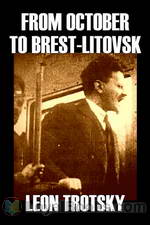 From October to Brest-Litovsk
From October to Brest-Litovsk
This account by Trotsky is of the events in Russia from the October Revolution of 1917 in Petrograd, to his signing of the Brest-Litovsk treaty with Germany on 3rd March 1918 which took Russia out of the First World War. The treaty exacted heavy losses for Russia in terms of annexations of land and financial indemnities to Germany. In this extended essay, Trotsky argues the reasons as to why he decided to sign what appears to be a disastrous agreement for Russia. | |
By: Leonard Pearson (1868-1909) | |
|---|---|
 Special Report on Diseases of Cattle
Special Report on Diseases of Cattle
| |
By: Leonardo da Vinci | |
|---|---|
 The Notebooks of Leonardo Da Vinci
The Notebooks of Leonardo Da Vinci
The Notebooks of Leonardo Da VinciPREFACEA singular fatality has ruled the destiny of nearly all the most famous of Leonardo da Vinci's works. Two of the three most important were never completed, obstacles having arisen during his life-time, which obliged him to leave them unfinished; namely the Sforza Monument and the Wall-painting of the Battle of Anghiari, while the third--the picture of the Last Supper at Milan--has suffered irremediable injury from decay and the repeated restorations to which it was recklessly subjected during the XVIIth and XVIIIth centuries... | |
By: Leslie Stephen (1832-1904) | |
|---|---|
 The Life of Sir James Fitzjames Stephen, Bart., K.C.S.I. A Judge of the High Court of Justice
The Life of Sir James Fitzjames Stephen, Bart., K.C.S.I. A Judge of the High Court of Justice
| |
By: Levi Seeley (1847-1928) | |
|---|---|
 History of Education
History of Education
| |
By: Lewis Hodus (1872-1949) | |
|---|---|
 Buddhism and Buddhists in China
Buddhism and Buddhists in China
Buddhism and Buddhists in China is an anthropological text describing Buddhism as practiced in China at the beginning of the 20th Century. Interestingly, it also compares and contrasts Buddhism with Christianity with respect to or in response to missionary work. | |
By: Liberty H. Bailey (1858-1954) | |
|---|---|
 Manual of Gardening (Second Edition)
Manual of Gardening (Second Edition)
| |
 The Apple-Tree The Open Country Books—No. 1
The Apple-Tree The Open Country Books—No. 1
| |
By: Library of Congress. Copyright Office | |
|---|---|
 Copyright Basics
Copyright Basics
| |
 Reproduction of Copyrighted Works By Educators and Librarians
Reproduction of Copyrighted Works By Educators and Librarians
| |
 Supplementary Copyright Statutes, US Copy. Office
Supplementary Copyright Statutes, US Copy. Office
| |
By: Lillian B. Lansdown | |
|---|---|
 How to Prepare and Serve a Meal; and Interior Decoration
How to Prepare and Serve a Meal; and Interior Decoration
| |
By: Lily Hammond (1859-1925) | |
|---|---|
 In the Garden of Delight
In the Garden of Delight
This novel is narrated in the first person and revolves around a character named Lil and the dynamics of a colorful cast of family members. She loves nature and, especially, birds, and thus the title. The story is set in Tennessee. The writing is very much a product of its place and time. Hammond was quite socially progressive but some of the language she puts into the mouths of characters and the depiction of African Americans may be upsetting to some readers. | |
By: Logan Marshall | |
|---|---|
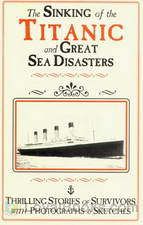 The Sinking of the Titanic and Great Sea Disasters
The Sinking of the Titanic and Great Sea Disasters
Logan Marshall's book "The Sinking of the Titanic and Great Sea Disasters" gives readers a first-hand account of the greatest sea disaster of all time straight from the survivors of the ill-fated sunken ship. Unlike many of the books about the Titanic that was written recently, Logan Marshall was fortunate that he was able to interview the survivors of the Titanic and access to all the important documents about the ship, including the diagrams, maps and actual photographs related to the disaster... | |
By: Lorne W. (Lorne Webster) Barclay (1885-) | |
|---|---|
 Educational Work of the Boy Scouts
Educational Work of the Boy Scouts
| |
By: Louis How (1873-1947) | |
|---|---|
 James B. Eads
James B. Eads
| |
By: Louisa Lilias Plunket Greene (1833-1891) | |
|---|---|
 On Angel's Wings
On Angel's Wings
Louisa Lilias Plunket Greene was an Irish author of children's books. However, like any good book for children, this book is also for adults. Everybody knows Violet, the girl who always sits in the window and looks at any passerby, the girl who is just looking, and never playing outside. The children tell her she is a hunchback. The adults consider them cruel. This book is exactly about that conflict. How much to tell? How much to shelter a girl from a world she might never be able to join? Can Violet be happy with her lot, even in the face of trouble? This is a very touching book for those who want to learn about children, the adults who love them, and what it truly means to be different... | |
By: Louisa May Alcott (1832-1888) | |
|---|---|
 Jack and Jill
Jack and Jill
Louisa May Alcott, more famously known for her Little Women series, takes a familiar nursery rhyme and creates a whole novel out of it in one of her last books Jack and Jill: A Village Story. Though she continued to publish under the penname AM Barnard, this book probably marked the end of a particular writing phase in 1880. Jack and Jill is set in the fictional Harmony Village. On a December afternoon, the youngsters of the village are out enjoying the bracing cold and snow. The bright winter shines down as they have fun skating and sledding... | |
 An Old-Fashioned Girl
An Old-Fashioned Girl
Polly Milton, a 14-year-old country girl, visits her friend Fanny Shaw and her wealthy family in the city for the first time. Poor Polly is overwhelmed by the splendor at the Shaws’ and their urbanized, fashionable lifestyles, fancy clothes and some other habits she considers weird and, mostly, unlikable. However, Polly’s warmth, support and kindness eventually win her the hearts of all the family members. Six years later, Polly comes back to the city to become a music teacher. | |
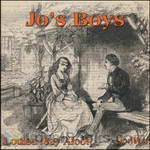 Jo's Boys
Jo's Boys
Jo’s Boys is the third book in the Little Women trilogy by Louisa May Alcott, published in 1886. In it, Jo’s “children”, now grown, are caught up in real world troubles. All three books – although fiction – are highly autobiographical and describe characters that were really in Alcott’s life. This book contains romance as the childhood playmates become flirtatious young men and women. The characters are growing up, going out into the world and deciding their futures. | |
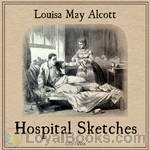 Hospital Sketches
Hospital Sketches
Alcott in 1862 served as a nurse in Georgetown, D.C during the Civil War. She wrote home what she observed there. Those harrowing and sometimes humorous letters compiled make up Hospital Sketches. | |
By: Louise Mack (1870-1935) | |
|---|---|
 Woman's Experiences in the Great War
Woman's Experiences in the Great War
An eye-witness account of the fall of Antwerp to the Germans in the opening months of World War I, Mack’s story has passages of extraordinary vividness and immediacy. Flawed by the most treacly sentiment in some places and the most ferocious anti-German invective in others, her account endures as an uncommonly forthright, passionate testimony to those tragic events and the ordinary people who were the true heroes of them. As a forty-something, coquettish war correspondent wrapped in sable furs... | |
By: Louisiana Purchase Exposition Commission | |
|---|---|
 Final Report of the Louisiana Purchase Exposition Commission
Final Report of the Louisiana Purchase Exposition Commission
| |
By: Lucy Aikin (1781-1864) | |
|---|---|
 Memoirs of the Court of Queen Elizabeth, Volumes I & II
Memoirs of the Court of Queen Elizabeth, Volumes I & II
Memoirs of Queen Elizabeth from a variety of sources within the monarch's court, compiled and interpreted by Lucy Aikin. | |
By: Lucy Larcom (1824-1893) | |
|---|---|
 A New England Girlhood: Outlined From Memory
A New England Girlhood: Outlined From Memory
Lucy Larcom was an American poet, teacher, and mil-worker. According to Wikipedia: "Larcom served as a model for the change in women's roles in society." This is her colorful autobiography. Here, she tells about her happy childhood, and her time working in the mill. Along the way, she speaks about topics like morality, independence, love and loss inside a family, a strong belief in god, and the effects of being poor. Fans of Gene Stratton Porter, Fanny Fern and Susan Warner, and Ella Wheeler Wilcox will be delighted with this book. Lucy's sunny personality makes this book a very uplifting and interesting read. | |
By: Ludwig van Beethoven (1770-1827) | |
|---|---|
 Selected Letters of Beethoven
Selected Letters of Beethoven
A selection of Beethoven’s letters from the compilation by Dr. Ludwig Nohl and translated by Lady Grace Wallace. | |
By: Luke Joseph Doogue (1865-) | |
|---|---|
 Making a Lawn
Making a Lawn
| |
By: Lydia E. Pinkham Medicine Company | |
|---|---|
 Food and Health
Food and Health
| |
By: Lydia Maria Gurney | |
|---|---|
 Things Mother Used to Make
Things Mother Used to Make
| |
By: Lyman Carrier (1877-1963) | |
|---|---|
 Agriculture in Virginia, 1607-1699
Agriculture in Virginia, 1607-1699
| |
By: Lyndon Orr pseudonym of Harry Thurston Peck (1856-1914) | |
|---|---|
 Famous Affinities of History: The Romance of Devotion
Famous Affinities of History: The Romance of Devotion
"Famous Affinities of History" is a book of passion-filled accounts of the most famous love affairs of history. The stories of Cleopatra, Victor Hugo, Honore de Balzac, Jonathan Swift, Charles Dickens, Karl Marx, Percy Bysshe Shelley, Byron, George Sand and other famous people of all times (even those of royal blood are not spared), are dealt with in Lyndon Orr's own interesting and suspenseful style. Written in four volumes, this book makes for an informative, interesting and thoroughly enjoyable read, giving us an insight into the lives and lifestyles of various popular figures of history. | |
By: Lysander Spooner | |
|---|---|
 Essay on the Trial by Jury
Essay on the Trial by Jury
FOR more than six hundred years that is, since Magna Carta, in 1215 there has been no clearer principle of English or American constitutional law, than that, in criminal cases, it is not only the right and duty of juries to judge what are the facts, what is the law, and what was the moral intent of the accused; but that it is also their right, and their primary and paramount duty, to judge of the justice of the law, and to hold all laws invalid, that are, in their opinion, unjust or oppressive, and all persons guiltless in violating, or resisting the execution of, such laws... | |
By: Lytton Strachey (1880-1932) | |
|---|---|
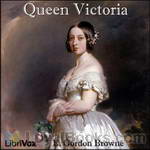 Queen Victoria
Queen Victoria
Lytton Strachey’s first great success, and his most famous achievement, was “Eminent Victorians” (1918), a collection of four short biographies of Victorian heroes. With a dry wit, he exposed the human failings of his subjects and what he saw as the hypocrisy at the centre of Victorian morality. This work was followed in the same style by “Queen Victoria” (1921). | |
By: M. C. (Maurice Chase) Burritt (1883-) | |
|---|---|
 Apple Growing
Apple Growing
| |
By: M. M. Mangasarian (1859-1943) | |
|---|---|
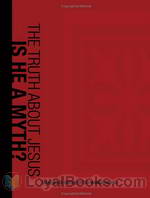 The Truth About Jesus. Is He a Myth?
The Truth About Jesus. Is He a Myth?
The following work offers in book form the series of studies on the question of the historicity of Jesus, presented from time to time before the Independent Religious Society in Orchestra Hall, Chicago, 1909. No effort has been made to change the manner of the spoken, into the more regular form of the written, word. | |
By: M. M. Pattison Muir (d1931) | |
|---|---|
 The Story of Alchemy and the Beginnings of Chemistry
The Story of Alchemy and the Beginnings of Chemistry
A light journey through the history of chemistry, from its start in the obscure mysteries of alchemy to what was, for the author, the cutting edge of the development of modern atomic theory … and whose developing blind ends we can now see with the advantage of hind sight. | |
By: Mabel Osgood Wright (1859-1934) | |
|---|---|
 The Garden, You, and I
The Garden, You, and I
| |
By: Magdalene Horsfall (1884-1936) | |
|---|---|
 Fairy Latchkey
Fairy Latchkey
Philomene Isolde is a good little girl, but has been very lonely since the death of her mother. Playing make-believe in the garden, Philomene is surprised when she meets a little man in a green suit who invites her to Fairyland. | |
By: Mallanaga Vatsyayana | |
|---|---|
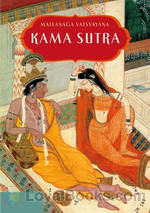 The Kama Sutra
The Kama Sutra
The Kama Sutra, or Aphorisms on Love, has survived at least 1400 years as a dominant text on sexual relations between men and women. Vatsyayana claimed to have written the Kama Sutra while a religious student, “in contemplation of the Deity” - but references to older works, shrewd disputations by Vatsyayana of those authors' recommendations, and careful cataloging of practices in various of the Indian states indicate much more emphasis on kama, or sensual gratification. Part of the book discusses the 64 arts of love employed by masters of coitus... | |
By: Mamie Dickens (1838-1896) | |
|---|---|
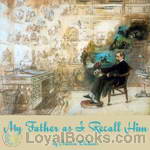 My Father As I Recall Him
My Father As I Recall Him
“If, in these pages, written in remembrance of my father, I should tell you, my dear friends, nothing new of him, I can, at least, promise you that what I shall tell will be told faithfully, if simply, and perhaps there may be some things not familiar to you.” So begins chapter one of My Father as I Recall Him, the personal recollections of Mary Dickens, (Mamie, as she was called), the oldest daughter of the great novelist, Charles Dickens. | |
By: Marcel Dupont (1879-1964) | |
|---|---|
 In the Field (1914-1915)
In the Field (1914-1915)
I have merely tried to make a written record of some of the hours I have lived through during the course of this war. A modest Lieutenant of Chasseurs, I cannot claim to form any opinion as to the operations which have been carried out for the last nine months on an immense front. I only speak of things I have seen with my own eyes, in the little corner of the battlefield occupied by my regiment. | |
By: Marcus Aurelius (121-180) | |
|---|---|
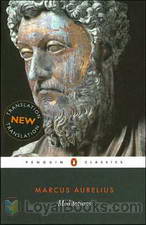 Meditations
Meditations
Marcus Aurelius was a Roman Emperor and philosopher who wrote Meditations; insights which were considered to give the meaning of life. The book was not written with the intent to be published. It offers a noteworthy chain of challenging situations which are a reflection on spirituality and enumerate the struggle to understand oneself and one's role in the universe. Written in the style of a journal, Meditations emphasizes that life in this world is short. Aurelius was a stoic philosopher who had influenced the thoughts of many leaders in his time... | |
By: Marcus Tullius Cicero | |
|---|---|
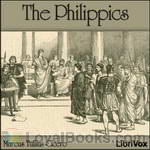 The Philippics
The Philippics
A philippic is a fiery, damning speech delivered to condemn a particular political actor. The term originates with Demosthenes, who delivered an attack on Philip II of Macedon in the 4th century BCE.Cicero consciously modeled his own attacks on Mark Antony, in 44 BC and 43 BC, on Demosthenes’s speeches, and if the correspondence between M. Brutus and Cicero are genuine [ad Brut. ii 3.4, ii 4.2], at least the fifth and seventh speeches were referred to as the Philippics in Cicero’s time. They were also called the Antonian Orations by Aulus Gellius... | |
 Letters of Marcus Tullius Cicero
Letters of Marcus Tullius Cicero
| |
By: Marcus Vitruvius Pollio (75 BC - c. 15 BC) | |
|---|---|
 Ten Books on Architecture
Ten Books on Architecture
On Architecture is a treatise on architecture written by the Roman architect Vitruvius and dedicated to his patron, the emperor Caesar Augustus as a guide for building projects. The work is one of the most important sources of modern knowledge of Roman building methods as well as the planning and design of structures, both large (aqueducts, buildings, baths, harbours) and small (machines, measuring devices, instruments). He is also the prime source of the famous story of Archimedes and his bath-time discovery. | |
By: Margaret Fuller (1810-1850) | |
|---|---|
 Woman in the Nineteenth Century and Kindred Papers Relating to the Sphere, Condition, and Duties of Women
Woman in the Nineteenth Century and Kindred Papers Relating to the Sphere, Condition, and Duties of Women
Margaret Fuller (1810-1850) was an American feminist, writer, and intellectual associated with the Transcendentalist movement. Her book Woman in the Nineteenth Century (1845) is considered the first major feminist work in the United States. Her life was short but full. She became the first editor of the transcendentalist journal The Dial in 1840, before joining the staff of the New York Tribune under Horace Greeley in 1844. By the time she was in her 30s, Fuller had earned a reputation as the best-read person in New England, male or female, and became the first woman allowed to use the library at Harvard College... | |
By: Margaret Louise [Editor] Newhall | |
|---|---|
 The 1926 Tatler
The 1926 Tatler
| |
By: Margaret Sanger (1879-1966) | |
|---|---|
 Woman and the New Race
Woman and the New Race
Margaret Sanger was an American sex educator and nurse who became one of the leading birth control activists of her time, having at one point, even served jail time for importing birth control pills, then illegal, into the United States. Woman and the New Race is her treatise on how the control of population size would not only free women from the bondage of forced motherhood, but would elevate all of society. The original fight for birth control was closely tied to the labor movement as well as the Eugenics movement, and her book provides fascinating insight to a mostly-forgotten turbulent battle recently fought in American history. | |
 Margaret Sanger; an autobiography
Margaret Sanger; an autobiography
Margaret Sanger, an advocate for birth control rights, chronicles the story of her struggles, including her times in jail and in exile, in order to legalize birth control options for women. She details the uphill battles of not only convincing lawmakers, but of doctors as well. Her relentless pursuit is told against the backdrop of courtrooms, her personal life, and her travels across the globe, giving a glimpse into the world during and post-WW I. This riveting account is a must read for those interested in a key moment in woman’s history and reform. | |
By: Margaret Sidney (1844-1924) | |
|---|---|
 Stories Polly Pepper Told to the Five Little Peppers in the Little Brown House
Stories Polly Pepper Told to the Five Little Peppers in the Little Brown House
Polly Pepper loves to tell stories, but there just isn't enough room in the other books to include her stories! So, since "the author has received from mothers and other persons interested in the Pepper Family, so many requests for the Stories told by Polly Pepper ... this initial volume of Polly’s earlier stories has been prepared in obedience to these requests" . So curl up at Polly's feet, in front of the warm fire, and enjoy the Stories Polly Pepper Told to the Five Little Peppers in the Little Brown House! - Summary by Rachel | |
By: Margaret Warner Morley (1858-1923) | |
|---|---|
 The Insect Folk
The Insect Folk
Through delightful outings with her students, a teacher introduces her class to the fascinating world of insects. She encourages her students to observe and ask questions. This is a wonderful science text for young children. | |
By: Marguerite Bernard and Edith Serrell | |
|---|---|
 Deer Godchild
Deer Godchild
A young New-Yorker of twelve heard an appeal for the Fatherless Children of France and his heart was touched. He had no money, but he resolved to give his spare time and his utmost energy to support a "kid in France." The French child needed ten cents worth of extra food each day, in order to grow up with strength and courage. The little American godfather earned those ten cents; he sold newspapers at the subway entrance, after school hours, and undertook an amazing variety of more or less lucrative odd jobs... | |
By: Marguerite Stockman Dickson | |
|---|---|
 Vocational Guidance for Girls
Vocational Guidance for Girls
VOCATIONAL GUIDANCE FOR GIRLSBy MARGUERITE STOCKMAN DICKSONA FOREWORDFortunate are we to have from the pen of Mrs. Dickson a book on the vocational guidance of girls. Mrs. Dickson has the all-round life experiences which give her the kind of training needed for a broad and sympathetic approach to the delicate, intricate, and complex problems of woman's life in the swiftly changing social and industrial world. Mrs. Dickson was a teacher for seven years in the grades in the city of New York. She then became the partner of a superintendent of schools in the business of making a home... | |
By: Maria Edgeworth (1767-1849) | |
|---|---|
 Practical Education, Volume I
Practical Education, Volume I
| |
By: Maria Gentile | |
|---|---|
 The Italian Cook Book
The Italian Cook Book
One of the beneficial results of the Great War has been the teaching of thrift to the American housewife. For patriotic reasons and for reasons of economy, more attention has been bestowed upon the preparing and cooking of food that is to be at once palatable, nourishing and economical.In the Italian cuisine we find in the highest degree these three qualities. That it is palatable, all those who have partaken of food in an Italian trattoria or at the home of an Italian family can testify, that it is healthy the splendid manhood and womanhood of Italy is a proof more than sufficient... | |
By: Maria Montessori (1870-1952) | |
|---|---|
 Dr. Montessori's Own Handbook
Dr. Montessori's Own Handbook
This is the authoritative book written by Montessori to describe her methods. It gives an overview of the Montessori Method as developed for 3 to 6 year olds. It is a short work, intended as a manual for teachers and parents, detailing the materials used as well as her philosophy in developing them. "As a result of the widespread interest that has been taken in my method of child education, certain books have been issued, which may appear to the general reader to be authoritative expositions of the Montessori system... | |
By: Maria Parloa (1843-1909) | |
|---|---|
 Chocolate and Cocoa Recipes and Home Made Candy Recipes
Chocolate and Cocoa Recipes and Home Made Candy Recipes
A selection of chocolate recipes which were produced for Walter Baker & Co, the oldest producer of chocolate in the United States. Advertisements used by Walter Baker & Co can be found in Section 7. They are read by: Cori Samuel, Peter Why, David Lawrence, BookAngel7, ashleighjane and Joanne Rochon. | |
 Miss Parloa's New Cook Book
Miss Parloa's New Cook Book
| |
By: Marion Ames Taggart (1866-1945) | |
|---|---|
 Little Grey House
Little Grey House
The Grey House is grey in color and is home to the Grey family. In this, the first of the Grey House books, we are introduced to the three Grey sisters, Oswyth, 17, Roberta, 16 and 14 year old Prudence, their sensible and down-to-earth mother and dreamer of a father, an inventor with his head in the clouds. As we grow to know and love the family, their neighbors and relatives, a menacing cloud appears and the girls must rally to save the father they love from his own obstinacy and their home from disaster. Will it all end in tragedy or will they save the day? - Summary by Lynne Thompson | |
 Miss Lochinvar
Miss Lochinvar
At breakfast, Mr. Graham drops the bombshell that his niece -- Joan, Jane or Janet, he's not sure which, will be arriving from the west to live with his large family. The news is met with mixed emotions - horror from his wife, resentment from the eldest two daughters and amusement from the eldest son. What will this stranger be like? How will she fit in with her cousins? - Summary by Lynne Thompson | |
By: Marion Foster Washburne (1863-) | |
|---|---|
 Study of Child Life
Study of Child Life
| |
By: Marion Harris Neil | |
|---|---|
 The Story of Crisco
The Story of Crisco
| |
By: Mark Twain (1835-1910) | |
|---|---|
 Life on the Mississippi
Life on the Mississippi
A river memoir documenting Twain’s early days as an apprentice steamboat pilot on the Mississippi River before the American Civil War. Reminiscing about his happy experiences as a young man under the instruction of an experienced mentor, the autobiographical tale depicts one of the most vivid illustrations of river life. Furthermore, the book captures the author’s nostalgic emotions through his resonant depiction of one of the most notable periods of his life. Twain begins his memoir with a rich historical account of the Mississippi River including its exploration by early explorers, its evolution, and its vastness... | |
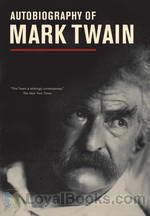 Chapters from my Autobiography
Chapters from my Autobiography
“...if I should talk to a stenographer two hours a day for a hundred years, I should still never be able to set down a tenth part of the things which have interested me in my lifetime.” The words of Mark Twain in his introduction to Chapters from my Autobiography provide a tantalizing glimpse of what is in store for the reader! Mark Twain, whose real name was Samuel Langhorne Clemens was still working on his reminiscences when he died in 1910. This book is really only a portion of the complete work... | |
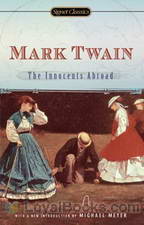 The Innocents Abroad
The Innocents Abroad
When you dive into Mark Twain’s (Samuel Clemens’) The Innocents Abroad, you have to be ready to learn more about the unadorned, ungilded reality of 19th century “touring” than you might think you want to learn. This is a tough, literary journey. It was tough for Twain and his fellow “pilgrims”, both religious and otherwise. They set out, on a June day in 1867, to visit major tourist sites in Europe and the near east, including Greece, Turkey, Lebanon, Syria, “the Holy Land”, and Egypt... | |
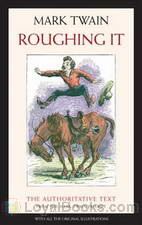 Roughing It
Roughing It
The semiautobiographical travel memoir records Twain’s, more or less, personal journey across the Wild West in search of adventure while exploring variable locations. Accompanying his brother on what becomes a trip of a lifetime, the young Samuel Clemens finds himself in many different vocational roles as he explores and observes the magnificence of the American West. Not refraining from the usual social commentary, Twain directs criticism on various social and moral issues which he approaches through his sly and witty style... | |
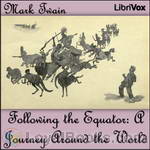 Following the Equator: A Journey Around the World
Following the Equator: A Journey Around the World
Following the Equator (American English title) or More Tramps Abroad (English title) is a non-fiction travelogue published by American author Mark Twain in 1897. Twain was practically bankrupt in 1894 due to a failed investment into a “revolutionary” typesetting machine. In an attempt to extricate himself from debt of $100,000 (equivalent of about $2 million in 2005) he undertook a tour of the British Empire in 1895, a route chosen to provide numerous opportunities for lectures in the English language... | |
 Fenimore Cooper's Literary Offences
Fenimore Cooper's Literary Offences
This is Mark Twain's vicious and amusing review of Fenimore Cooper's literary art. It is still read widely in academic circles. Twain's essay, Fenimore Cooper's Literary Offenses (often spelled "Offences") (1895), particularly criticized The Deerslayer and The Pathfinder. Twain wrote at the beginning of the essay: 'In one place in Deerslayer, and in the restricted space of two-thirds of a page, Cooper has scored 114 offenses against literary art out of a possible 115. It breaks the record.' Twain listed 19 rules 'governing literary art in domain of romantic fiction', 18 of which Cooper violates in The Deerslayer. (Introduction by Wikipedia and John Greenman) | |
 In Defense of Harriet Shelley
In Defense of Harriet Shelley
Mark Twain pulls no punches while exposing the "real" Percy Shelley in this scathing condemnation of Edward Dowden's "Life of Shelley". Even though, as Twain writes, "Shelley's life has the one indelible blot upon it, but is otherwise worshipfully noble and beautiful", Twain shows how Shelley's extra-marital conduct might easily be seen to have been the cause of his wife Harriet's suicide. (Introduction by John Greenman) | |
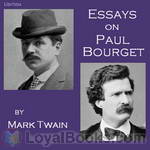 Essays on Paul Bourget
Essays on Paul Bourget
Collection of short essays concerning French novelist and critic Paul Bourget. Included: "What Paul Bourget Thinks of Us" and "A Little Note to M. Paul Bourget". | |
By: Martha Finley (1828-1909) | |
|---|---|
 Mildred Keith
Mildred Keith
Mildred Keith has a good life in Lansdale, Ohio - family, friends and school keep her happy and busy. But when her parents announce they're all moving to Indiana, Mildred's faith is tested beyond anything she could have imagined. Through good times and bad, follow Mildred and her family as they learn to rely on the Lord for strength in every circumstance! This project was proof-listened by Adele de Pignerolles and Linette Geisel. - Summary by Rachel | |
 Mildred and Elsie
Mildred and Elsie
Mildred returns home from visiting her mother's relatives. She continues to grow in wisdom and beauty and receives many proposals of marriage. She is an ever-increasing blessing to her family and community. In-laws are added to the family, and they enjoy a visit from Horace Dinsmore and his daughter Elsie. - Summary by Amy | |
 Mildred at Home: With Something About Her Relatives and Friends
Mildred at Home: With Something About Her Relatives and Friends
Book 5 of the story of Mildred Keith by Martha Finley. We join Mildred as she settles into home life as wife and mother. We also see the rest of the Keith children begin to make starts of their own - some near to home, and others far away and perhaps lost forever. The Dinsmore cousins continue to be part of the story as well. - Summary by Michelle Hannah | |
By: Martha McCulloch-Williams (1857?-) | |
|---|---|
 Dishes & Beverages of the Old South
Dishes & Beverages of the Old South
| |
By: Martin Luther (1483-1546) | |
|---|---|
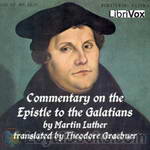 Commentary on St. Paul's Epistle to the Galatians
Commentary on St. Paul's Epistle to the Galatians
Martin Luther strove to give a verse by verse exegesis of the Epistle to the Galatians in the work. The original work, written in Latin in around 1516, was much longer. This translation by Theodore Graebner (1876-1950) strove to produce a copy of the work in a format and with wording much more applicable to the general English-speaking American public. | |
 The Smalcald Articles
The Smalcald Articles
MANUAL OF SURGERY, OXFORD MEDICAL PUBLICATIONSBY ALEXIS THOMSON, F.R.C.S.Ed.PREFACE TO SIXTH EDITION Much has happened since this Manual was last revised, and many surgical lessons have been learned in the hard school of war. Some may yet have to be unlearned, and others have but little bearing on the problems presented to the civilian surgeon. Save in its broadest principles, the surgery of warfare is a thing apart from the general surgery of civil life, and the exhaustive literature now available on every aspect of it makes it unnecessary that it should receive detailed consideration in a manual for students... | |
 Concerning Christian Liberty
Concerning Christian Liberty
Early in the course of the Reformation (1520) Martin Luther penned a trilogy of foundational documents addressing the Church, the Nobility and the Christian life. This document concerning the Christian life expounds the famous paradox: "A Christian man is the most free lord of all, and subject to none; a Christian man is the most dutiful servant of all, and subject to every one." | |
By: Mary A. Wilson | |
|---|---|
 Mrs. Wilson's Cook Book Numerous New Recipes Based on Present Economic Conditions
Mrs. Wilson's Cook Book Numerous New Recipes Based on Present Economic Conditions
| |
By: Mary Antin | |
|---|---|
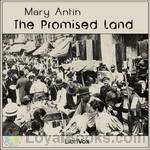 The Promised Land
The Promised Land
Being a Jew in Russia at the end of the 19th century was not easy at all. Jews were persecuted because of their religion. So the Jews found comfort in their ancient traditions. When Mary Antin’s father decided that keeping to his traditions did not suit him anymore, he found no place in Russia. So he emigrated to America with his family. Life was not easy, though as a child, Mary describes life in Boston as almost perfect. A smart and dignified girl, Mary takes the good things in anything and writes her autobiography with a smile. | |
 From Plotzk to Boston
From Plotzk to Boston
An intensely personal account of the immigration experience as related by a young Jewish girl from Plotzk (a town in the government of Vitebsk, Russia). Mary Antin, with her mother, sisters, and brother, set out from Plotzk in 1894 to join their father, who had journeyed to the “Promised Land” of America three years before. Fourth class railroad cars packed to suffocation, corrupt crossing guards, luggage and persons crudely “disinfected” by German officials who feared the cholera, locked “quarantine” portside, and, finally, the steamer voyage and a famiily reunited... | |
By: Mary Eales | |
|---|---|
 Mrs. Mary Eales's receipts. (1733)
Mrs. Mary Eales's receipts. (1733)
| |
By: Mary Eaton (fl. 1823-1849) | |
|---|---|
 The Cook and Housekeeper's Complete and Universal Dictionary; Including a System of Modern Cookery, in all Its Various Branches, Adapted to the Use of Private Families
The Cook and Housekeeper's Complete and Universal Dictionary; Including a System of Modern Cookery, in all Its Various Branches, Adapted to the Use of Private Families
| |
By: Mary Elizabeth Braddon (1835-1915) | |
|---|---|
 Aurora Floyd Volume 2
Aurora Floyd Volume 2
Aurora Floyd is the spoiled, impetuous, but kind hearted daughter of Archibald Floyd, a wealthy banker and his wife, an actress who died shortly after Aurora's birth. As a teenager she is sent away to finishing school in Paris. This is volume two of the story which tells of Aurora's life with her husband John Mellish. This is a story of love, murder and the search for justice. - Summary by Michele Eaton | |
By: Mary Everest Boole (1832-1916) | |
|---|---|
 Philosophy and Fun of Algebra
Philosophy and Fun of Algebra
Mary Everest Boole (1832-1916) was born Mary Everest in England and spent her early years in France. She married mathematician George Boole. She was the author of several works on teaching and teaching mathematics in particular. This short book, Philosophy and Fun of Algebra, is meant to be read by children and introduces algebra and logic. She uses the word “algebra” broadly, defining it as a “method of solving problems by honest confession of one’s ignorance”. Using this definition, Boole introduces, in a conversational manner, the concepts of logic and algebra, illustrating these concepts with stories and anecdotes, often from biblical sources... | |
By: Mary Finley Leonard (1862-1948) | |
|---|---|
 Candle and the Cat
Candle and the Cat
"To the memory of TROLLEY, This little story is dedicated." When young Caro goes to stay with her Aunt and Grandfather, the seminary president, she learns to not be afraid of the dark and to "be a candle" by "sharing her light" with the help of Trolley the cat. In doing so, she is able to help others, including a reclusive invalid, renew their old friendships. - Summary by JHedrick | |
By: Mary H. Kingsley | |
|---|---|
 Travels in West Africa
Travels in West Africa
Mary Henrietta Kingsley (13 October 1862 – 3 June 1900) was an British explorer and writer who greatly influenced European ideas about Africa and its people. Kingsley was an outspoken critic of European colonialism, a champion for indigenous customs, and a dedicated campaigner for a revised British policy which supported traders and merchants over the needs of settlers and missionaries. Her adventures were extraordinary and fascinating. Among other things she fought with crocodiles, fell into native spear traps and was caught in a tornado on the slopes of Mount Cameroon... | |
By: Mary H. Northend (1850-1926) | |
|---|---|
 Remodeled Farmhouses
Remodeled Farmhouses
"There is a certain fascination connected with the remodeling of a farmhouse. Its low, raftered interior, its weather-beaten exterior, never fail to appeal. Types vary with the period in which they were built, but all are of interest. In this collection, which has been pictured with great care, pains have been taken to show as many different types as possible, so that the student will be able to find numerous interesting details that can be incorporated into his contemplated remodeling." [opening lines of Preface] | |